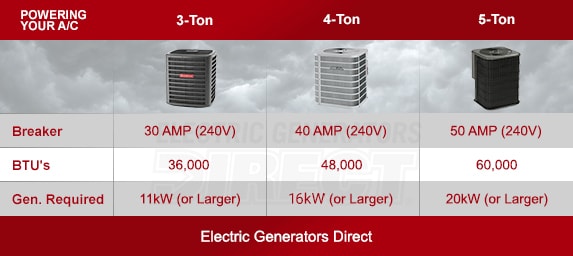
X-Large Emergency Generator Buying Guide
How to Pick the Perfect X-Large Gas Generator
Standby generators are great. But, sometimes they just aren't practical.
For example, some homes are powered entirely by electricity. No natural gas. No propane.
Standby generators simply don't work in these situations because they won't have any fuel.
Many homeowners would like a standby generator, but they don't want to install an unsightly propane tank in their back yard.
The best alternative is an X-Large Portable Generator with a huge gas tank.
These big generators are not automatic, but they pack enough power to turn over central air conditioners, which is a necessity down South.
How Big is My Air Conditioner?
If you want to run your central air conditioner, it's vital that you select the right sized gas generator.
Simply take a good look at the label on your air conditioner. It will tell you either the TONS, BTUs or the AMPS of your system.
For example, if you have a 4-ton (or 48,000 BTU) air conditioner, you'll need at least a 14-kilowatt generator.
If the label is missing, take a look at your main circuit panel, most air conditioners use either a 30-Amp, 40-Amp or 50-Amp double-pole circuit breaker.
The size of the breaker is typically a great indicator to the size of your air conditioner.

Job Site Power
Extra-large emergency generators are also great sources for power on the job. These big powerhouses can provide enough power for everyone on the site. They can provide power for lighting, tools, radios, and anything else you may need on the job.
Job sites are often times located where there's no access to electricity. If you're building a new subdivision, and there's not yet any live power to the area, this is your best bet for all of your job site needs.
Looking for Automatic Standby Power?
Home standby generators are installed and wired into your circuit breaker. Once an outage occurs, your generator will automatically start up and begin replacing the lost power whether you're home or away.
